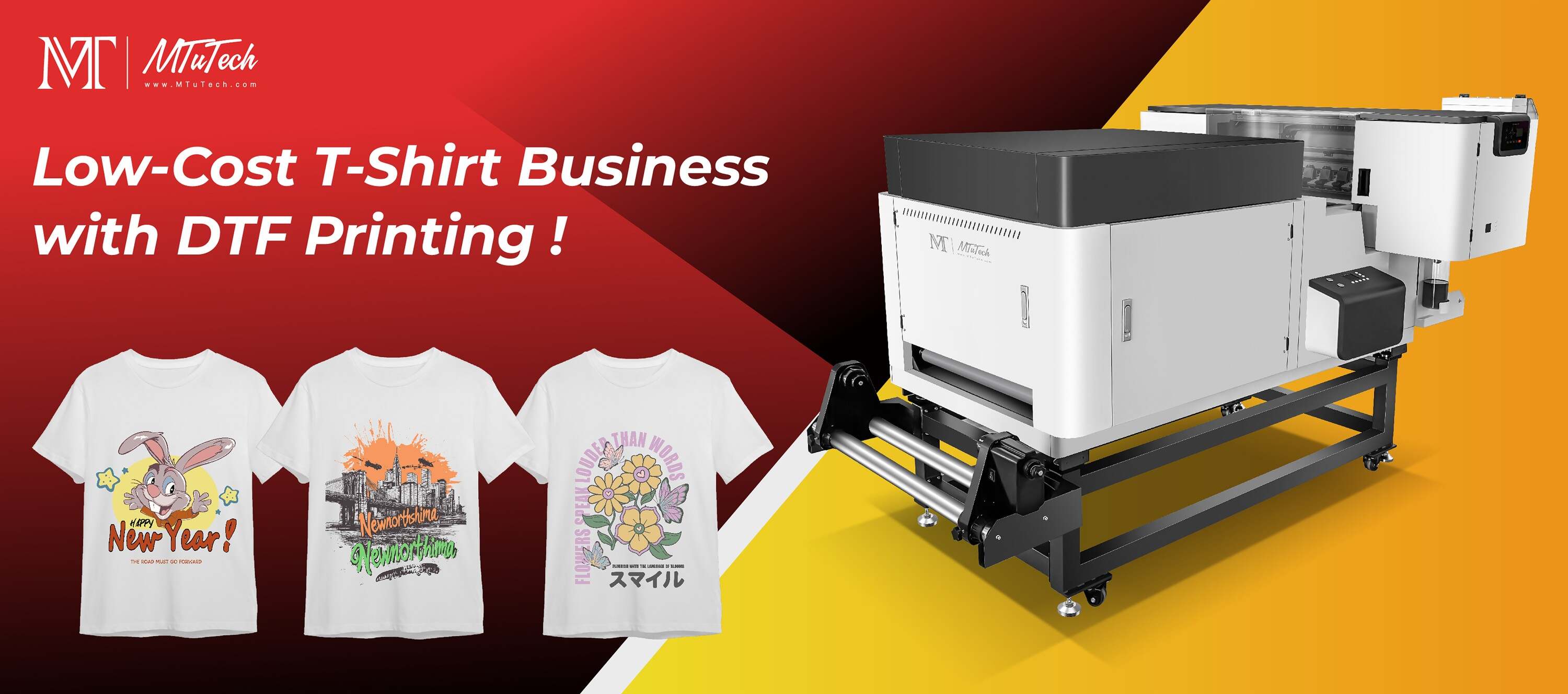Introduction
Direct-to-Film (DTF) printing has revolutionized the way designs are transferred onto fabric. It offers a fantastic alternative to traditional screen printing and direct-to-garment (DTG) methods. One of its greatest advantages is the versatility it provides – from vibrant colors to detailed images, DTF printing meets the needs of various businesses, including apparel, promotional items, and custom merchandise.
In this article, we will dive deep into the DTF printing process, breaking it down into 6 essential steps, from film creation to the final product. Whether you're new to the printing world or a seasoned professional looking for a refresher, this guide aims to be your go-to resource.
Step 1: Design Creation
The journey of a stunning printed fabric begins with an eye-catching design. This is where creativity meets technology.
Design Requirements
High-resolution artwork (at least 300 DPI) is essential to ensure sharpness.
Employ graphic design software such as Adobe Illustrator or CorelDRAW to create vector files.
Use the RGB color model since it provides a broader spectrum of colors compared to CMYK.
Once your design is ready, it’s time to prepare it for film printing. The digital file should be converted to the right format—most commonly PNG or TIFF—ensuring transparency for optimal results on fabric.
Step 2: Film Printing
This step involves printing your design onto a high-quality film. Film printing is crucial, as the quality of the film directly influences the final output on fabric.
Choosing the Right Printer
Use a specialized DTF printer that can handle the specific inks and film materials for optimal results.
Ensure the printer settings are adjusted appropriately for film output, typically requiring higher resolution settings.
After printing, the design on the film should appear crisp and vibrant. The next step will prepare the printed film to be transferred onto fabric.
Step 3: Powder Adhesive Application
After the design is printed onto the film, it is time to apply a special adhesive powder. This is a pivotal stage that ensures the ink binds effectively to the fabric during the heat transfer.
Applying the Adhesive
The printed film is gently coated with a hot melt adhesive powder.
Shake off the excess adhesive to avoid clumping, ensuring a thin, even layer across the design.
Once the adhesive is applied, it needs to be cured. This typically involves placing the film in a pre-heated oven, allowing the adhesive to melt and bond with the ink. The curing process can vary, so following manufacturer guidelines is paramount.
Step 4: Heat Transfer
With the cured film ready, the next step is heat transfer, where the design is permanently attached to the fabric.
Heat Pressing the Design
Place the film face down on the fabric;
Utilize a heat press set at the recommended temperature (usually between 320°F and 356°F) for the advised duration (typically 10-15 seconds).
Apply appropriate pressure, as it plays a critical role in the adhesion process.
After the heat transfer, allow the fabric to cool down before carefully peeling away the film. A well-executed transfer will leave behind a sharp, durable design that can withstand washing and wear.
Step 5: Quality Control
No production process is complete without quality control. This step ensures that each piece meets the desired standards before it is delivered to customers.
Evaluating the Print
Check for color accuracy, ensuring the finished product matches the original design.
Inspect for any defects in the print, such as fade spots or blurring.
Evaluate the adhesion by stretching the fabric slightly to ensure the design remains intact.
It is crucial to conduct quality checks throughout the process, not just at the end. This can prevent larger issues down the line, ensuring customer satisfaction and reducing wastage.
Step 6: Finishing Touches
Finally, the last step involves the finishing touches that prepare the printed fabric for packaging and shipping.
Final Preparations
Remove any excess materials, such as loose threads or adhesive residue.
Fold or package each item neatly for an appealing presentation.
Label items accurately with care instructions for washing and handling to ensure longevity.
Once these steps are complete, your DTF printed garment is ready to be shipped to its new owner, ready to make an impression!
Conclusion
The DTF printing process is an intricate yet straightforward method of transferring designs onto fabric. By understanding each step, from the initial design creation to the final quality checks, businesses and creators can reap the benefits of this innovative technology. Possibilities are endless when it comes to designs, fabrics, and applications. If you are considering investing in DTF printing technologies for your business, explore our high-quality DTF printers here to find the perfect fit for your needs.
FAQ
What type of fabrics can be used in DTF printing?
DTF printing is versatile and can be used on a variety of fabrics, including cotton, polyester, blends, and even some synthetic materials. This makes it suitable for a wide range of applications.
What is the difference between DTF and DTG printing?
DTG (Direct-to-Garment) printing applies ink directly onto the fabric, ideal for garments with large designs. DTF printing uses a film and adhesive powder, allowing for better versatility in fabric types and applications, particularly in bulk production.
How durable are DTF prints?
When properly cured and transferred, DTF prints are highly durable and can withstand multiple washes without fading or cracking. They can maintain vibrancy and quality over time, making them an excellent choice for long-lasting designs.
Can DTF prints be used for color gradients or complex images?
Yes! DTF printing excels in producing vibrant color gradients and intricate designs, making it suitable for detailed artwork and photographic images.
Is DTF printing environmentally friendly?
DTF printing can be more environmentally friendly than traditional methods when using eco-solvent inks and recyclable films. However, it's best to consult with manufacturers for specifics regarding their materials.

